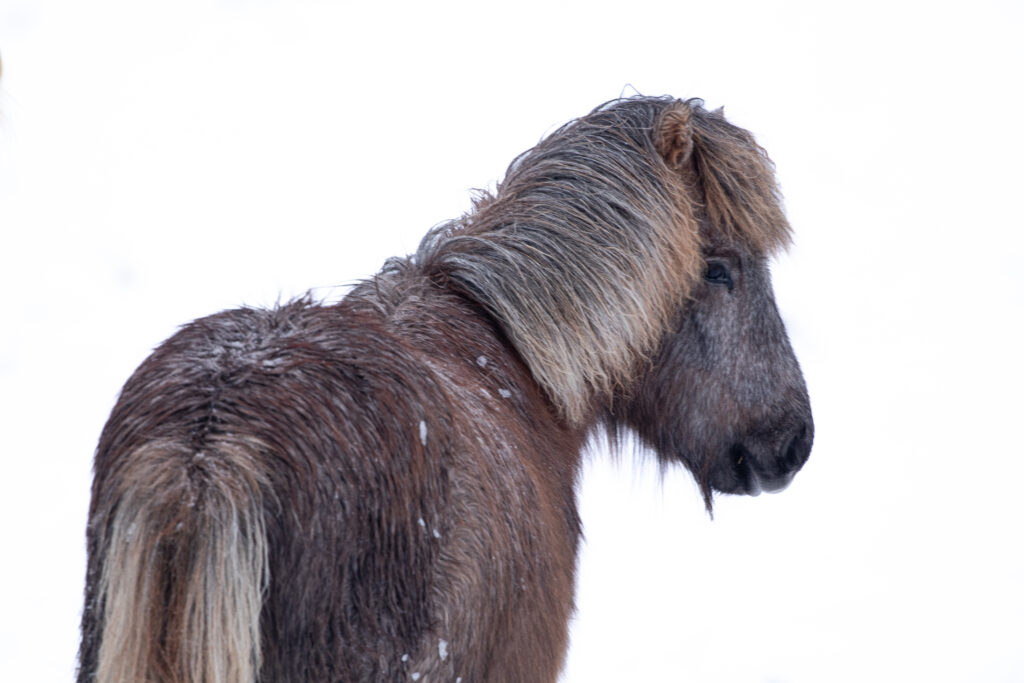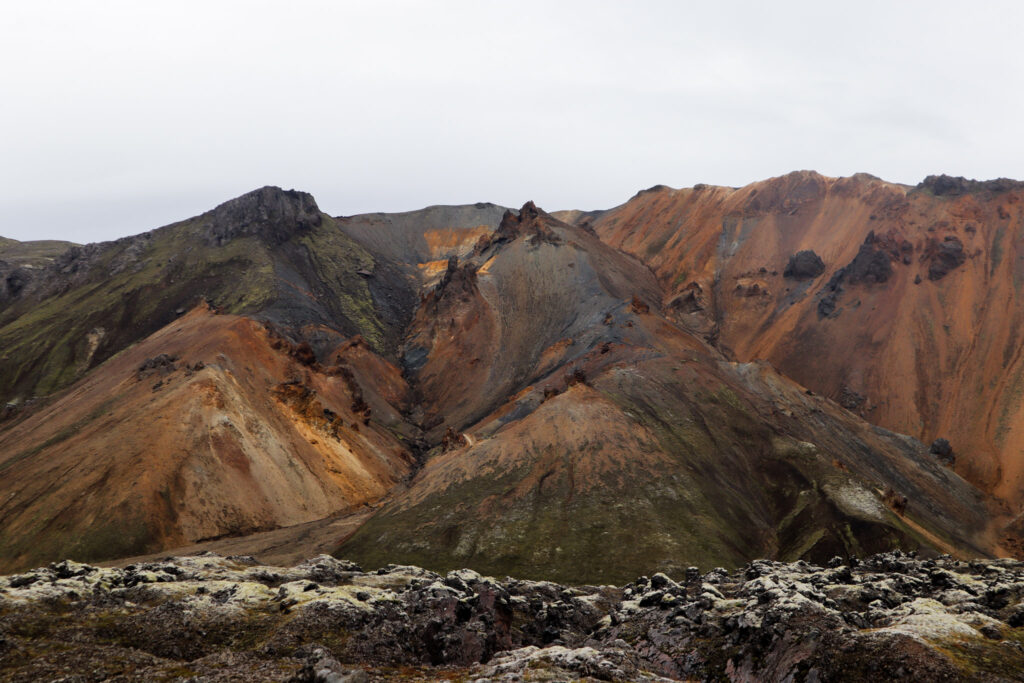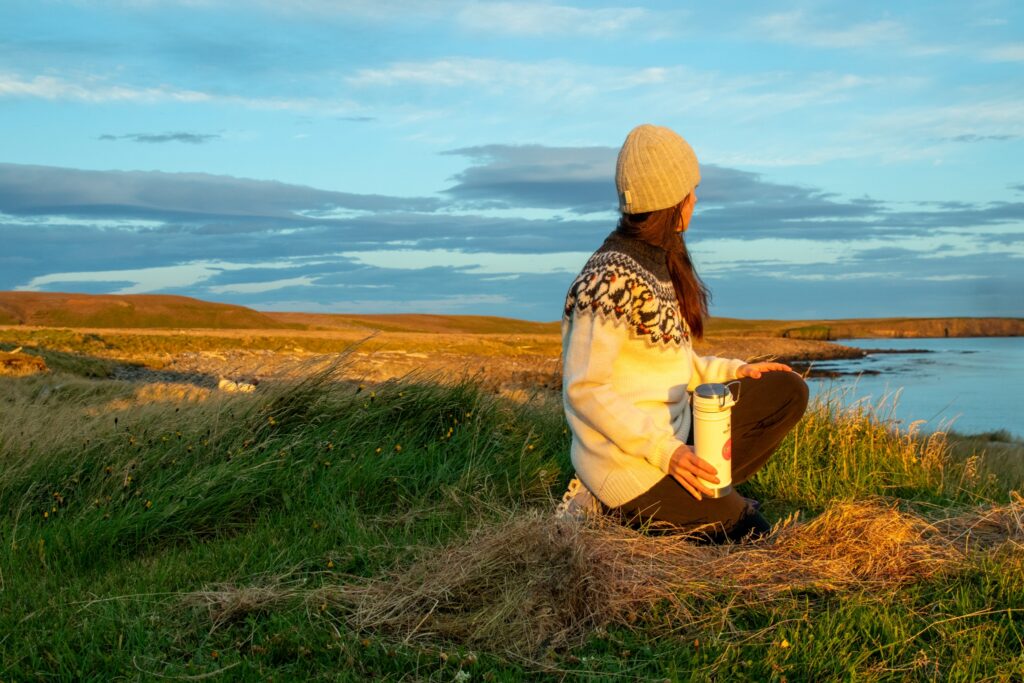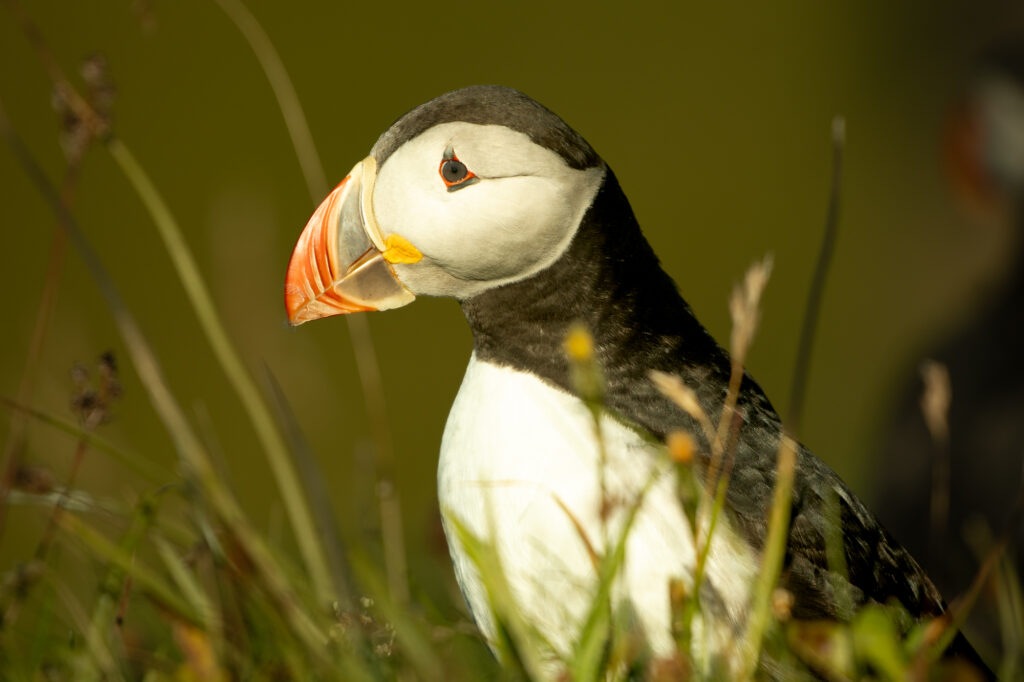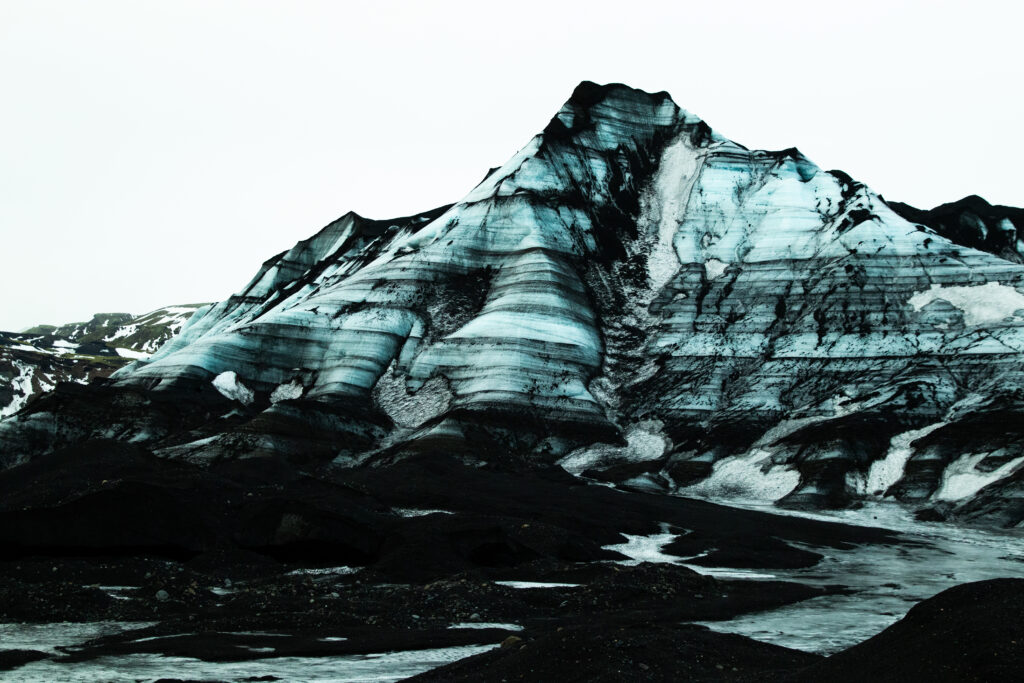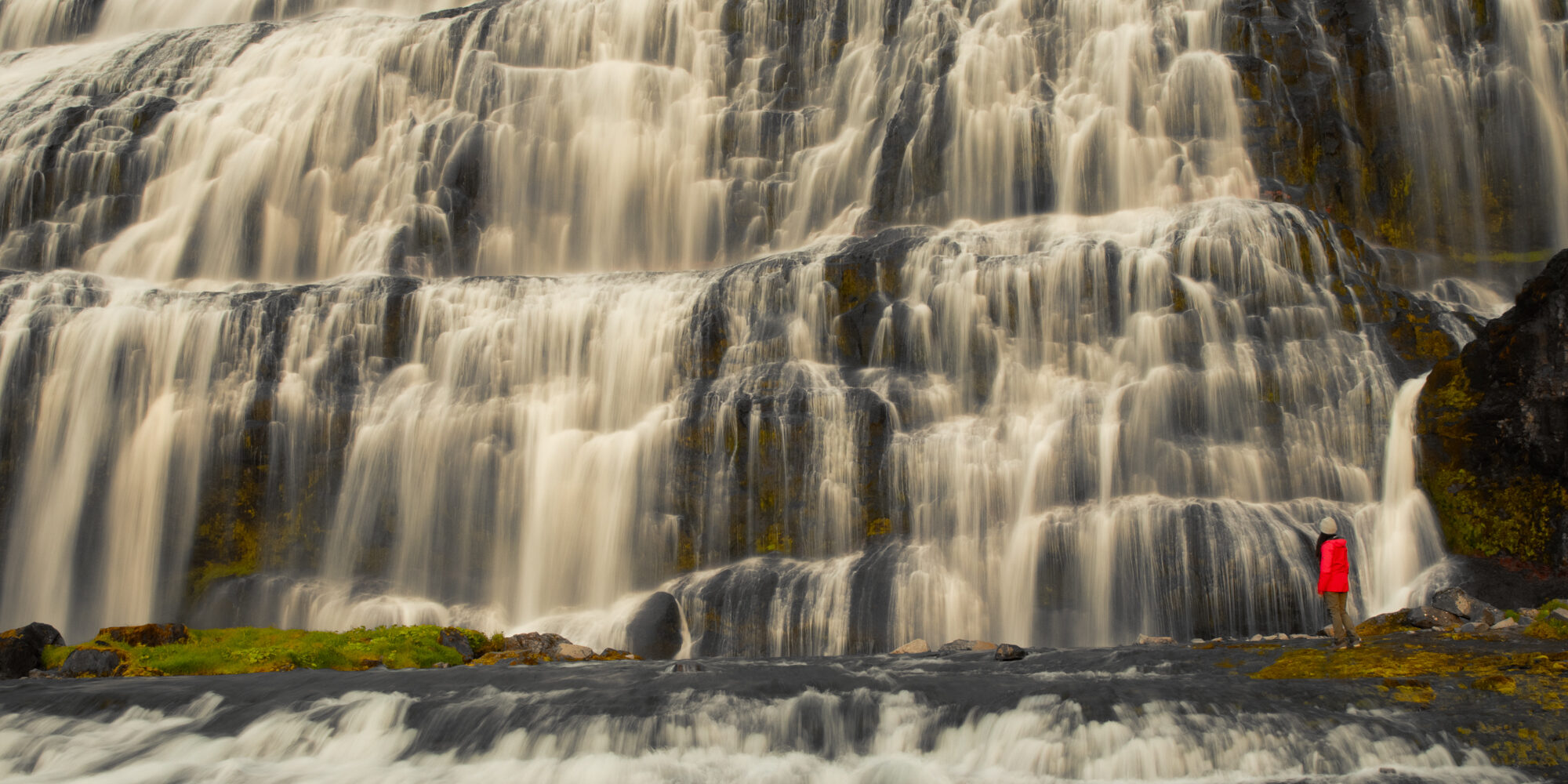In every walk in nature one receives far more than he seeks.
-John Muir
My pace slowed as I made my way along the long path fringed with evergreens. There was something that begged me to linger. Perhaps it was the air, tinged with the distant scent of the sea, or the silence. With each step, a sense of calm enveloped me. The scene was quite different from last week’s snowy landscape; the clear, cold nights were filled with a green, humming sky dance. Spring was beginning to show itself in subtle ways, through the bird song and the available light.
Eventually, the path opened to reveal the fjord, mountain peaks set aglow by the rising sun, their light shimmering silver across the water. Between the heather, a curious ptarmigan peeked. I took a seat on a rock facing east and listened to the cries of the godwits and gulls, the waves lapping on the shore. The melody lured me into a state of calm, and I felt I could stay there forever, immersed in nature and touch with the core of my being. Despite all the adventures I had in Iceland, these simple moments with nature were still my favorites, perhaps because they allowed me to return to myself.
Tourism in Iceland is booming, and during the summer months, the popular spots, especially Iceland’s south coast, are pretty busy. I enjoy watching the tourists as they gaze upon their first Icelandic waterfall or accompany them through a tour of the highlands. Their expression of awe and wonder says it all.
During my travels to this special country, I have made it a mission to connect with people and nature. As a photographer and wildlife enthusiast, I crave the quiet mornings, serene sunsets, and solo hikes across the countryside, where my only companion is a mountain sheep.
Iceland is truly a natural masterpiece. From stunning waterfalls amidst green gorges, colorful rhyolite mountains in the highlands, vast black sand beaches, and otherworldly landscapes framed with glaciers and volcano craters, there is no shortage of moments that make you say, “wow.“
For the nature lover, Iceland is paradise no matter what time of year. Nature enthusiasts plan an Iceland trip for every reason, from witnessing the Northern lights to seeing the charming Atlantic puffin. Other natural features unique to the land of fire and ice include Europe’s largest glacier, Vatnajökull, ice caves painted black with volcanic rock, such as Katla, the elusive Arctic fox, and nature preserves steeped in hidden gems and panoramic scenery, like Thórsmörk.
This, amongst other reasons, is why I return to Iceland again and again, and each time this beautiful country stuns me with its majesty. As someone who prefers solitude and tranquility over crowds and cities, I have ventured across the country to discover Iceland’s hidden secrets, the places where nature is abundant, and where mass tourism is at a minimum.
There are exceptions to this, just as with any other thing. For example, the lesser-traveled Snaefellsnes is seeing more tourists now than in previous years; however, you will still find fewer people than, for instance, on the Golden Circle. Another recommendation I have is to visit Iceland during the shoulder seasons, such as spring or fall, when tourism is lower.
Here is a general guide for time of year to plan your Iceland vacation depending on your interest:
- Winter months. The season is from November through March. Pros include fewer people, and dark, cold nights provide a better chance to see the Northern Lights. This is also prime time to visit an ice cave or tour a glacier. Cons are that the weather can affect road conditions, which can alter plans. Places like the West Fjords and North Iceland become inaccessible due to road conditions, and the highlands are closed. Most campgrounds are closed as well; however, some farm-owned campgrounds might allow you to stay for a fee if you contact them. Winter in Iceland is a magical time and my favorite time to visit because of the cozy, dark ambience and ethereal northern lights, however daylight and activities are limited.
- Spring in Iceland begins in April and lasts until June; however, snow can still be seen in April. I love the Icelandic spring. Birdlife returns to the island, including the puffins, in late April, and you see the daylight increase every day. There is also a chance to see the aurora until mid-April. You can enjoy fewer crowds (until June, when the tourism season begins), and more campgrounds will be open. Some parts of the highlands become accessible in June, depending on road conditions. The weather can be mild and more tolerable for folks who dislike the cold.
- Summer in Iceland is from late June through August and is Iceland’s tourist season. The highlands are open for travel, and all campgrounds are operational. Twenty-four hours of daylight and mild temperatures provide ample time to explore in a more enjoyable climate. You can expect tours to book up quickly, and popular sights, such as the waterfalls and black sand beaches, will be crowded during the day.
- Autumn in Iceland, from September to November, offers travelers a quieter and slower option for visiting, with a good chance of seeing the Northern Lights without the heavy snow of winter. Campgrounds begin to close, as does access to the highlands, and the puffins return to the sea. Autumn in Iceland is stunning, with its foliage changing, cooler temperatures, and fewer crowds. It is a nice time to tour Iceland if you are interested in landscapes and the Northern Lights.
Regardless of the time of year, there are places in Iceland steeped in nature and folklore that see fewer people. Typically, these are the harder-to-reach places, and I do recommend renting a 4×4 for more travel options.
In the Iceland groups, I often see people looking for recommendations on places to visit away from the crowds for a truly authentic Icelandic nature experience. Believe me, I get it. Why travel to a place rich in beauty and wonder only to be fighting your way through the crowds and selfie sticks for a moment?
This inspired me to create my Iceland for Nature Lovers guide, which features my top recommendations for places to visit in Iceland for those seeking a quieter escape and connection with nature. I have extensive experience exploring these places, and I want more than anything to help other people planning their Iceland trip fall in love with the country like I have. I often say it is not only what I see in Iceland, but also what I feel, and that feeling was most present in those simple moments when I was connected with the nature and beauty around me.
The guide is not an itinerary, but rather a list of places and tips to inspire you and create an unforgettable Iceland vacation. These are places I return to again and again, and I will continue to visit because of their unique charm and beauty.
Included in the guide is a bonus West Fjords section, additional recommendations such as general travel advice, and tips on how to choose the best time of year to visit depending on your interest.
If you choose to connect further, I offer a personalized Iceland itinerary based on your interests. There is a contact form to fill out to get started. All itineraries include a personalized packing list, ( believe me packing for Iceland can be confusing!), tour recommendations, recommendations for places to stay, and a half hour consult with me on Zoom to address any additional questions once you receive your itinerary!
You can download my Iceland for Nature Lovers Guide here at a special price of $1.99!
Goða ferð and safe travels! I hope your Iceland adventure has as much of an impact on your life as it did on mine! If you use my guide to plan your travels, I would love to hear from you! Drop me an email and let me know what your favorite part was!
